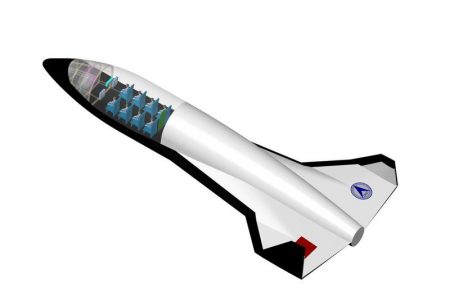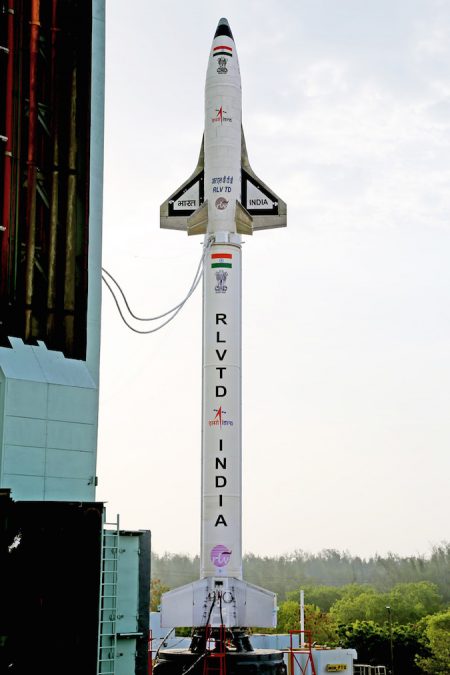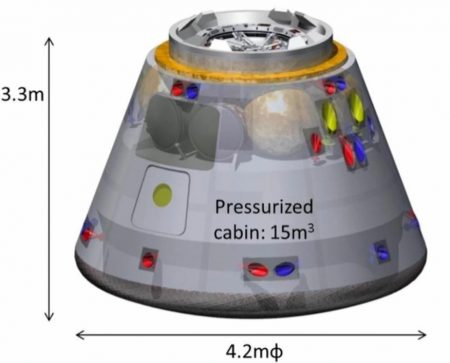
December 27, 2017 – In my Christmas day posting about Russia’s plans for a luxury hotel attached to the International Space Station, I listed and briefly described commercial rivals to this Russian initiative. But nowhere did I discuss the potential for Asian competitors to enter the space tourism business. This is my oversight and I intend to present here what is happening with space tourism in China, India, and Japan.
China
According to a recent article appearing in New Scientist, China has plans to build a spaceplane to do suborbital flights carrying up to 20 tourists to the edge of space. The China Academy of Launch Vehicle Technology (CALT) has designs for a spaceplane to take off in a similar fashion to the former American Space Shuttle (without external fuel tanks), reach 100 kilometers in altitude, and then unpowered descend and glid to an airstrip landing.

Two versions of the spaceplane are being considered. The first a 5-passenger suborbital craft. The second a 100-ton, 12-meter wingspan, spaceplane capable of reaching an altitude of 130 kilometers traveling at speeds of Mach 8 and giving 20 tourists a 4-minute weightlessness experience. The Chinese want to make suborbital flights affordable although the price tag they are contemplating is almost identical to what Virgin Galactic is charging for a single ride. The spaceplane will be designed for reuse, good up to 50 flights before decommissioning or refurbishing. The timetable for first test launch with no passengers is 2020.
China’s ambition to revolutionize space travel isn’t limited to suborbital flights. The country has announced plans to build a nuclear-powered shuttle capable of Deep Space flight to asteroids. CALT sees a nuclear fleet as the key to interplanetary flight, and commercial exploitation of near-Earth and Deep Space. These nuclear-powered ships will be built to colonize the Solar System. States Li Hong, Director of CALT, “By 2045, China will have the best transport system in space.” That includes a Chinese Moon base and taikonauts landing on Mars.
India
India’s space agency, the Indian Space Research Organization (ISRO), has made great strides in the last few years. The country has even begun testing a command module similar to Apollo, for future Indian astronauts to travel to low-Earth orbit on Indian rockets.
Like China, India sees two tourism opportunities for its space program: suborbital and orbital travel. But unlike China, India has yet to launch a human into suborbital or orbital space using a rocket or spaceplane of its own design.
In 2016, India launched a prototype spaceplane, the RLV-TD, in a suborbital flight that reached 65 kilometers in altitude. The vehicle had no onboard engines but the initial test proved the viability of the heat shield technology, and the airflow design, which allowed the craft to hit its defined splashdown target 450 kilometers away. In the post-mortem press conference, Indian officials admitted that they were still 15 years away from offering suborbital space flights.

In 2014, India took its first steps to send Indians to space unveiling a 4-meter tall module designed to carry two astronauts and a payload of up to 9 tons into low-Earth orbit. Subsequently, an unpiloted successful launch was made in December of that year using India’s largest booster rocket, the Geosynchronous Satellite Launch Vehicle (GSLV) to test the design. The capsule landed in the Bay of Bengal and was recovered after splashdown. India continues to test its homegrown technology but has announced no timelines for a first Indian to fly to the edge of space or to orbit. Don’t be surprised, however, if by the mid-2020s, India joins the United States, Russia, China, and commercial space companies in achieving these milestones.
Japan
The Japanese Aerospace Exploration Agency (JAXA) back in 2012, according to Space.com, set a target date of 2022 to launch astronauts aboard two possible technologies: a home-built capsule, and a space plane. The capsule, depicted in the diagram below eerily resembles Apollo, and like its predecessor would be designed to carry a crew of three plus 400 kilograms of cargo.

The JAXA spaceplane would be similar to Sierra Nevada’s Dream Chaser. It too would carry a crew of three and would be designed to land on runways.
Currently Japan launches HTV resupply capsules to the International Space Station. This is expendable technology (use once and then burn up in the upper atmosphere). The plan is to make the HTV recoverable and reusable. If successful, this would be the first step to creating a crew capsule.
Japan also has plans to bild more powerful rockets capable of carrying larger payloads to low-Earth orbit and beyond. And it has ambitions to offer point-to-point suborbital passenger service with new spaceplane technology within a decade.








